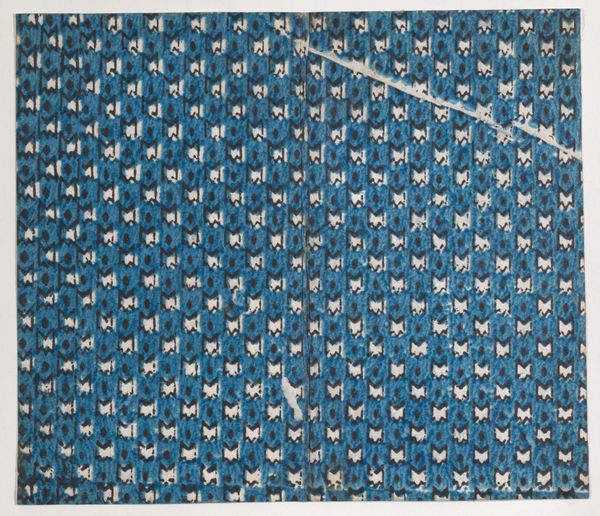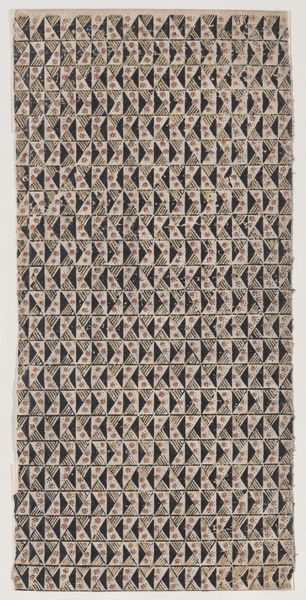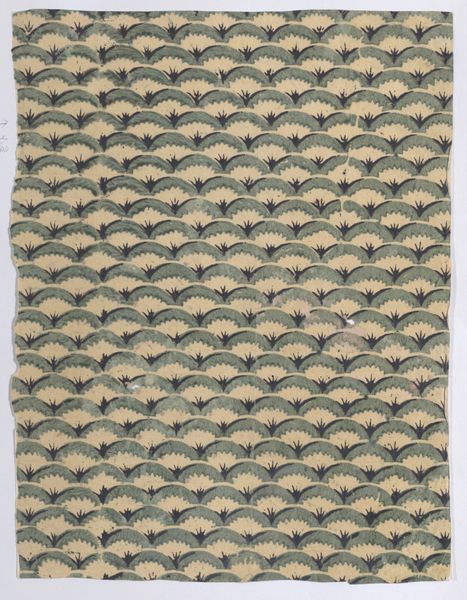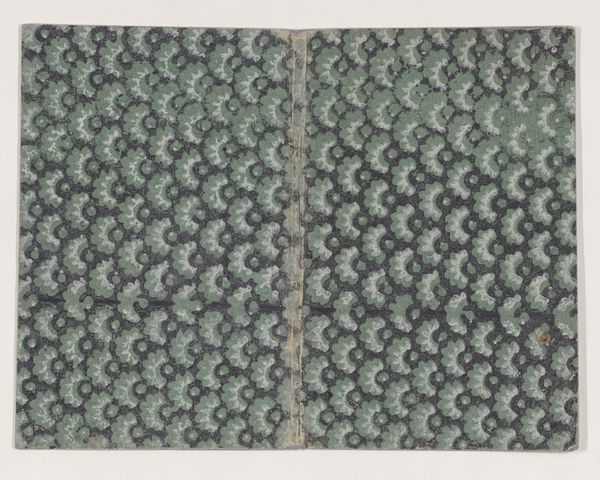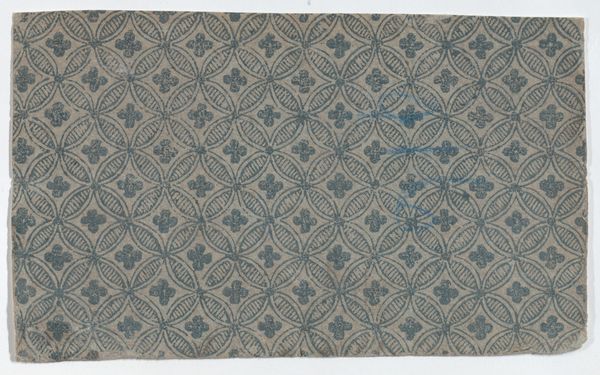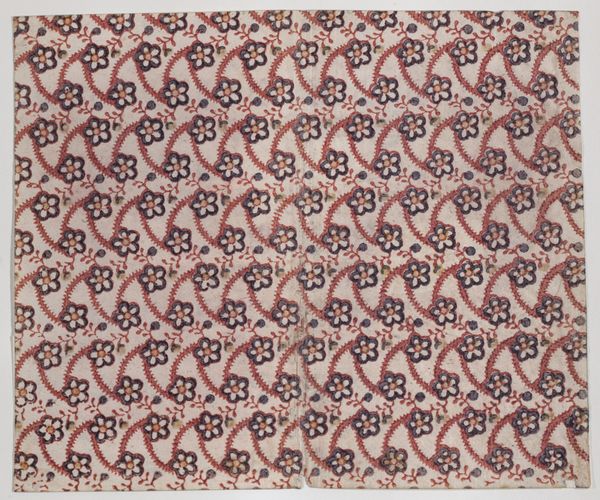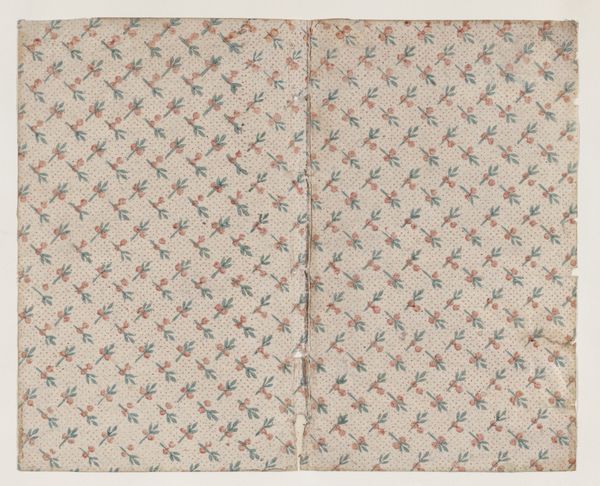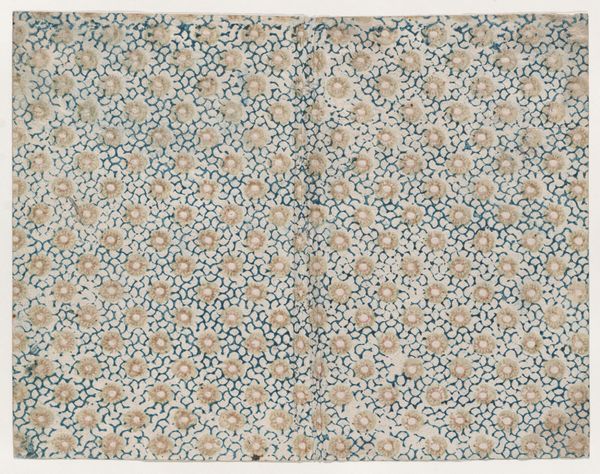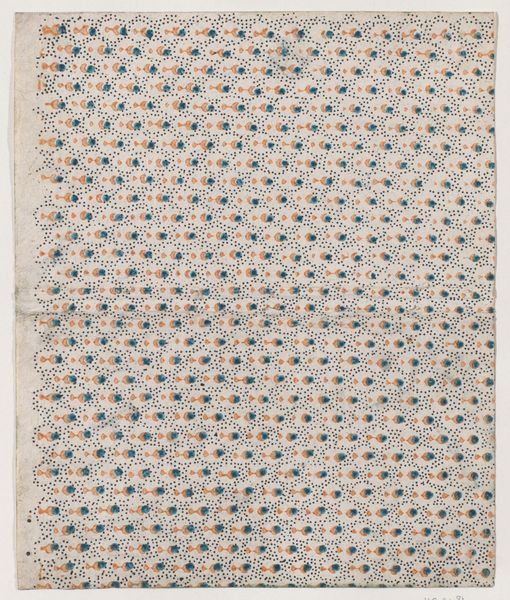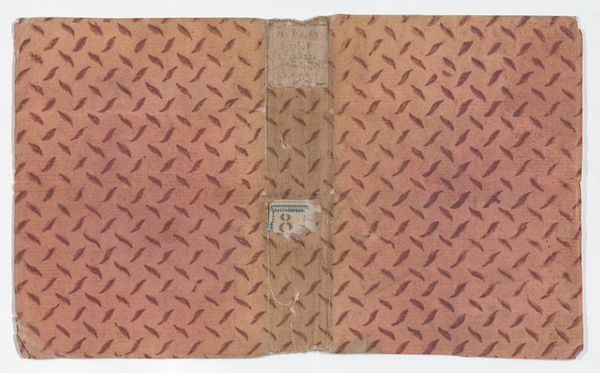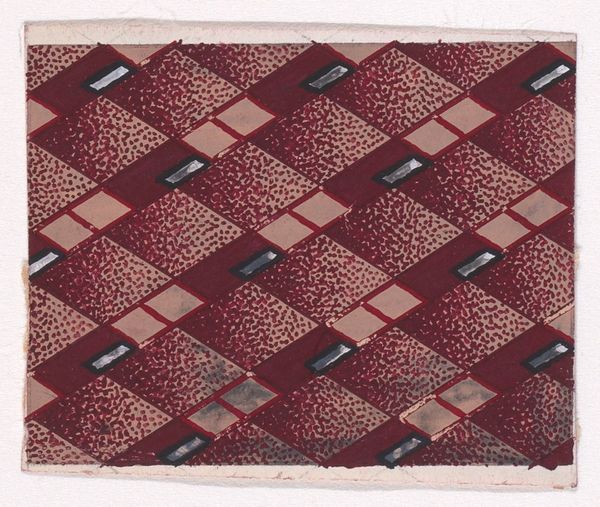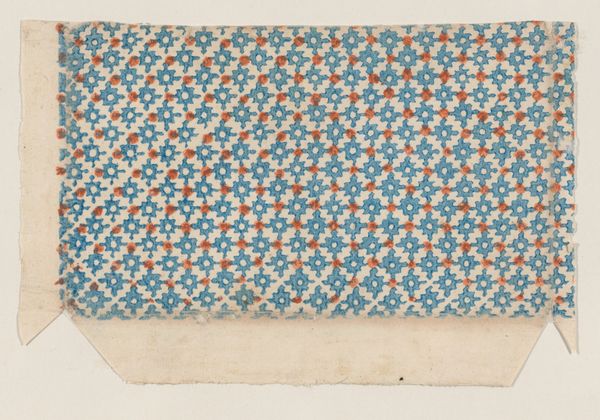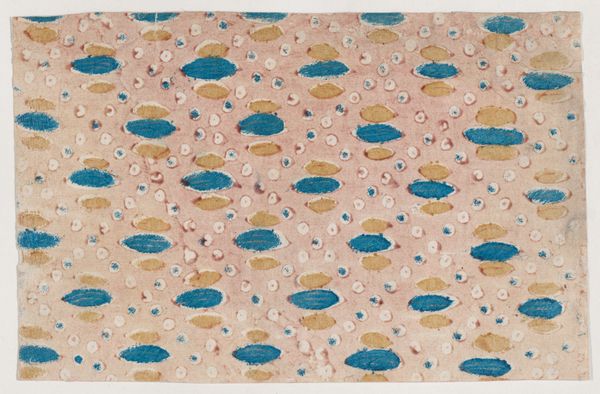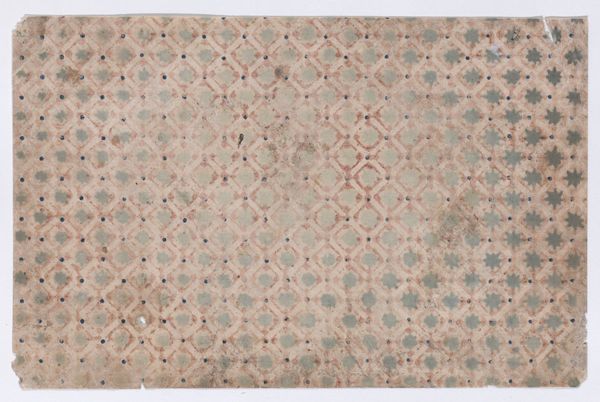
drawing, print, watercolor
#
drawing
#
organic
# print
#
pattern
#
watercolor
#
organic pattern
#
geometric
#
watercolour bleed
#
watercolor
Dimensions: Sheet: 7 5/16 × 8 5/16 in. (18.5 × 21.1 cm)
Copyright: Public Domain
Curator: Hmm, looks like an unsettling sky filled with downturned arrows or raindrops about to fall. Makes me feel a little anxious, honestly. What's this piece about? Editor: Well, this is "Sheet with overall curved abstract pattern," a watercolor and ink drawing, possibly also a print, created sometime between 1800 and 1900 by an anonymous artist. It resides here at the Met. The work gives the impression of mass production, each element is so similar and precisely placed. I wonder, how might an artist, even one working before the modern era, experience the burgeoning sense of mechanized reproduction? Curator: That’s interesting... I was caught by the sheer repetition, yes, almost like a wallpaper sample. But there’s also a fragility to the watercolor bleeds, making the geometric grid imperfect. It feels handmade and intensely personal even while employing this repeating motif. Do you see it as impersonal then? Editor: Not necessarily impersonal. But it certainly hints at the burgeoning industrialization. The very act of creating a repeating pattern suggests the possibility of scaling up, of mass production, perhaps of transferring this pattern to textiles or some other utilitarian object. I'm intrigued by how these 'curved' shapes and arrow like patterns almost fit so neatly, like cogs in some great, unknowable mechanism of that time. Did the artist conceive it as fine art, or did they have something functional in mind? Curator: Functional… Maybe both? Artists often borrow from and reflect their surroundings, but, at its core, it evokes something universal about patterns in nature, too. It’s organized, and chaotic at once; you could look at it for hours and never truly memorize its repetitions. To me, that friction between organic inspiration and rigid geometry feels very contemporary. Editor: Absolutely. Thinking about the materiality, watercolor itself is an interesting choice. It’s quick, relatively inexpensive, and capable of being reproduced with other technologies. Yet each wash remains unique. Its ephemeral, almost fleeting nature further complicates its connection to permanence of industrialized art, which I like. Curator: It is quite complex, indeed, much more than I originally perceived in this repeating geometric, seemingly minimalist watercolor drawing! It holds some rather deep waters. Editor: Well said! There is real tension there when considering art in production, between individual skill, artistic vision, industrial production and commodity, especially in early stages. It’s something to ponder while viewing, certainly.
Comments
No comments
Be the first to comment and join the conversation on the ultimate creative platform.
